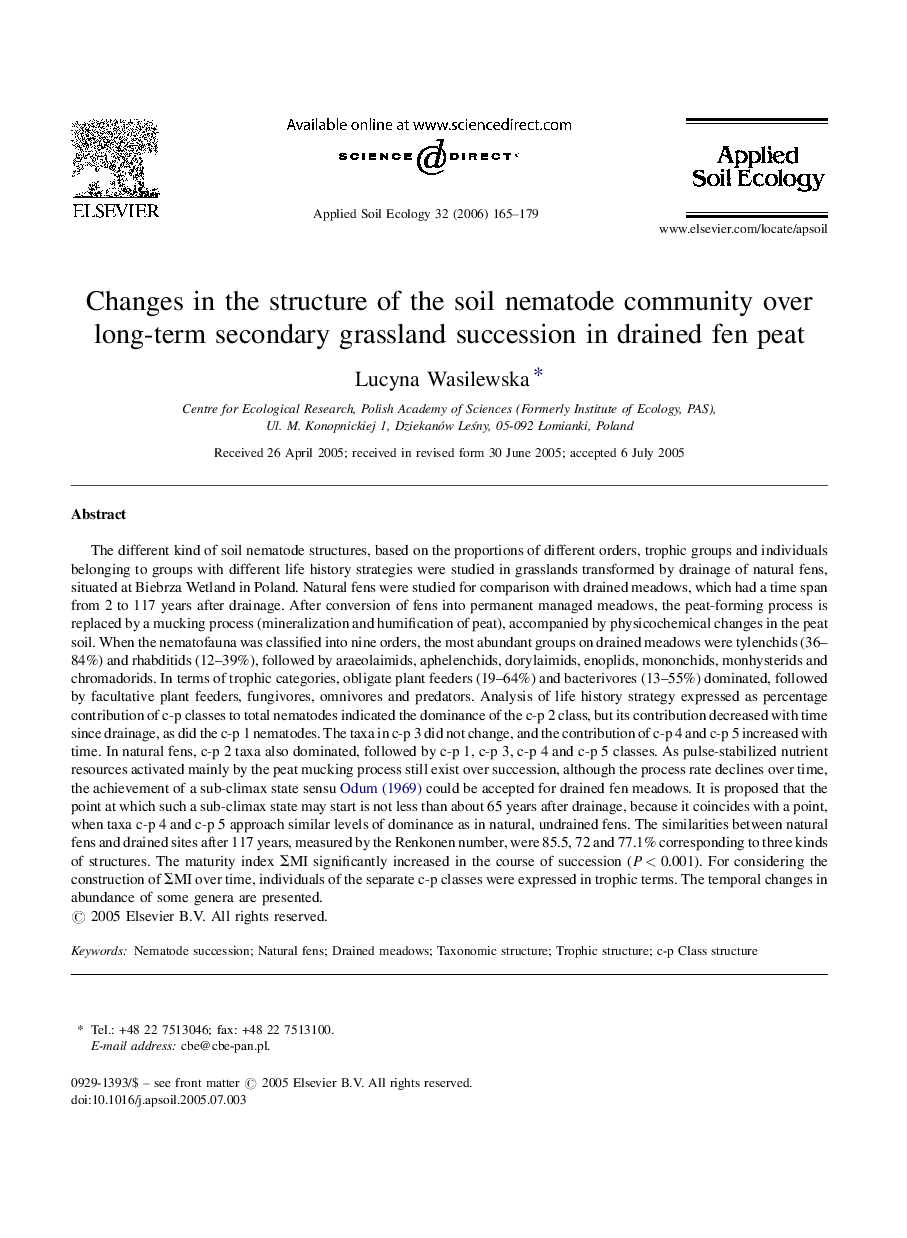| کد مقاله | کد نشریه | سال انتشار | مقاله انگلیسی | نسخه تمام متن |
|---|---|---|---|---|
| 4383570 | 1304275 | 2006 | 15 صفحه PDF | دانلود رایگان |

The different kind of soil nematode structures, based on the proportions of different orders, trophic groups and individuals belonging to groups with different life history strategies were studied in grasslands transformed by drainage of natural fens, situated at Biebrza Wetland in Poland. Natural fens were studied for comparison with drained meadows, which had a time span from 2 to 117 years after drainage. After conversion of fens into permanent managed meadows, the peat-forming process is replaced by a mucking process (mineralization and humification of peat), accompanied by physicochemical changes in the peat soil. When the nematofauna was classified into nine orders, the most abundant groups on drained meadows were tylenchids (36–84%) and rhabditids (12–39%), followed by araeolaimids, aphelenchids, dorylaimids, enoplids, mononchids, monhysterids and chromadorids. In terms of trophic categories, obligate plant feeders (19–64%) and bacterivores (13–55%) dominated, followed by facultative plant feeders, fungivores, omnivores and predators. Analysis of life history strategy expressed as percentage contribution of c-p classes to total nematodes indicated the dominance of the c-p 2 class, but its contribution decreased with time since drainage, as did the c-p 1 nematodes. The taxa in c-p 3 did not change, and the contribution of c-p 4 and c-p 5 increased with time. In natural fens, c-p 2 taxa also dominated, followed by c-p 1, c-p 3, c-p 4 and c-p 5 classes. As pulse-stabilized nutrient resources activated mainly by the peat mucking process still exist over succession, although the process rate declines over time, the achievement of a sub-climax state sensu Odum (1969) could be accepted for drained fen meadows. It is proposed that the point at which such a sub-climax state may start is not less than about 65 years after drainage, because it coincides with a point, when taxa c-p 4 and c-p 5 approach similar levels of dominance as in natural, undrained fens. The similarities between natural fens and drained sites after 117 years, measured by the Renkonen number, were 85.5, 72 and 77.1% corresponding to three kinds of structures. The maturity index ΣMI significantly increased in the course of succession (P < 0.001). For considering the construction of ΣMI over time, individuals of the separate c-p classes were expressed in trophic terms. The temporal changes in abundance of some genera are presented.
Journal: Applied Soil Ecology - Volume 32, Issue 2, June 2006, Pages 165–179